Maintaining healthy indoor air quality is essential for creating a comfortable and safe living environment, but achieving this can be more complex than it seems. Among the many devices touted for improving indoor conditions, the dehumidifier often stands out. But does it really “clean the air” or meaningfully enhance indoor air quality? This article dives into the science behind how dehumidifiers function, their impact on air cleanliness, and how they can address specific concerns like mold, allergens, and excess humidity. Whether you’re looking to boost your home’s air quality or are simply curious about how these devices play a role in a healthy indoor climate, we’ll explore the facts and debunk common misconceptions along the way.
How Does a Dehumidifier Work and Improve Air Quality?
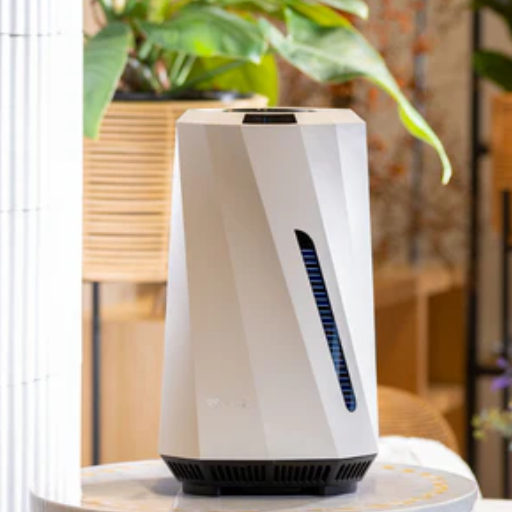
A dehumidifer operates by pulling in humid air, extracting the moisture from it, and releasing drier air back into the environment. Through the use of a fan that pulls air over refrigerate coils, moisture condenses into water, which is collected and stored in a tank, or directly removed. The method is adopted to reduce humidity levels, helping to prevent the growth of mold and mildew which thrive in damp conditions. Lower humidity reduces the presense of dust mites and other common allergens, while contributing healthier air. This feature makes them especially useful for maintaining an optimal indoor environment in humid climates or confined spaces.
What is a Dehumidifier and How Does it Function?
A dehumidifier operates through a combination of advanced components designed to efficiently extract moisture from the air. Central to its operation is the refrigeration cycle, which involves a compressor, condenser coils, and an evaporator. Air is drawn into the unit by a fan and passed over the cold evaporator coils, where moisture in the air condenses into water droplets. The dehumidified air is then reheated by the condenser coils before being released back into the room, maintaining a comfortable temperature and relative humidity balance.
Modern dehumidifiers come equipped with sophisticated features to enhance usability and efficiency. Many devices now include built-in hygrometers that provide real-time humidity readings, allowing users to set and maintain target humidity levels, which are typically recommended to be between 30% and 50% for optimal indoor air quality. Additionally, energy-efficient models utilize advanced compressors and eco-friendly refrigerants to minimize power consumption while still maintaining effective performance.
Data also highlights the growing importance of dehumidifiers in improving health and reducing allergens. Studies indicate that reducing indoor humidity levels below 50% significantly decreases the proliferation of mold spores, mildew, and dust mites—common triggers for allergies and asthma. Some newer models even feature HEPA or carbon filters that further purify incoming air, making them a popular choice among households with respiratory concerns or those living in particularly damp climates. These technological advancements ensure that dehumidifiers not only address excess moisture but also contribute to creating healthier, more comfortable living environments.
Can a Dehumidifier Help Remove Moisture and Reduce Humidity?
Dehumidifiers are designed to efficiently extract excess moisture from the air, thereby reducing indoor humidity levels. This is achieved through a cycle of air intake, cooling, condensation, and re-release. When damp air enters the dehumidifier, it passes over refrigerated coils where the moisture condenses into water droplets, which are collected in a reservoir or drained directly via a hose. The drier air is then reheated and circulated back into the room, creating a more balanced humidity level.
A balanced indoor humidity level is typically between 30% and 50%, which minimizes mold growth, dust mites, and structural damage caused by excessive moisture, such as peeling paint or warped wood. For instance, studies show that keeping humidity below 50% can reduce the proliferation of mold spores by up to 80%, contributing to healthier indoor air quality. Advanced dehumidifiers now include digital sensors that allow users to accurately monitor and maintain desired humidity levels in real-time.
Energy efficiency is another key aspect to consider. Modern dehumidifiers are designed to use less energy while maintaining high performance. Models certified by ENERGY STAR, for example, consume 15% less energy than standard alternatives, lowering utility costs over time. For spaces prone to persistent dampness, such as basements or crawl spaces, industrial-grade dehumidifiers offer higher moisture removal capacities, often measured in pints per day (PPD). Some high-capacity models can remove up to 70 PPD, making them suitable for particularly challenging environments.
By utilizing a dehumidifier, homeowners can take proactive steps to safeguard their living spaces from the adverse effects of excess humidity, promoting a healthier and more comfortable environment efficiently and effectively.
How Does Removing Excess Moisture Help Improve Indoor Air Quality?
Excess moisture in indoor environments can significantly impact air quality, leading to multiple health concerns and structural issues. High humidity encourages the growth of mold, mildew, and dust mites, which are common indoor allergens. Mold exposure, for instance, is linked to respiratory issues such as asthma and allergies, with studies showing that around 21% of asthma cases are associated with damp indoor conditions. By reducing indoor humidity levels to the recommended range of 30-50%, the risks associated with these allergens diminish substantially.
Furthermore, excess moisture can increase the presence of volatile organic compounds (VOCs) released from building materials, furniture, and cleaning products. VOC levels tend to rise in humid conditions, impacting overall air quality. Controlling humidity through dehumidifiers or better ventilation not only minimizes VOCs but also helps in reducing surface condensation, thereby preventing bacterial growth on walls, windows, or other surfaces.
High humidity can also make the air feel warmer than it truly is, creating discomfort for occupants and potentially increasing the use of cooling systems. This excessive reliance on air conditioning can elevate energy consumption, which heightens environmental and financial costs. By managing moisture effectively, indoor environments become more comfortable and energy-efficient, promoting both health and sustainability simultaneously.
Do You Need a Dehumidifier or an Air Purifier?
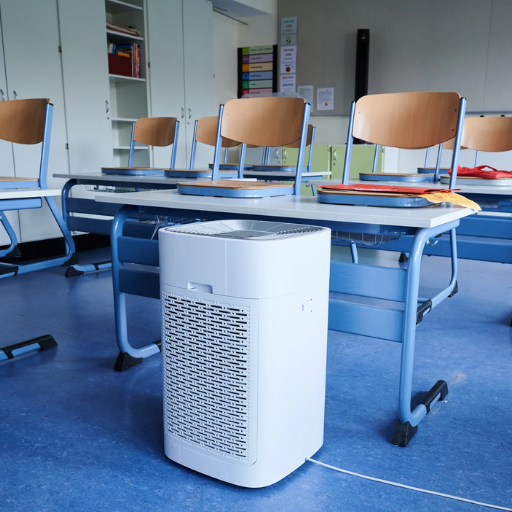
Whether you need a dehumidifier or an air purifier depends on the problem you’re trying to address in your indoor environment.
- Choose a Dehumidifier if excess humidity is your main concern. This device reduces moisture levels, preventing issues like mold growth, musty odors, and damage to walls or furniture. It’s ideal for damp areas like basements or spaces with persistent condensation.
- Choose an Air Purifier if air quality is the issue. This appliance removes pollutants like dust, allergens, pet dander, and odors, making it beneficial for individuals with allergies, asthma, or sensitivities to airborne particles.
Evaluate your indoor conditions carefully—if both moisture and air quality are concerns, you may benefit from using both devices to create an optimal living environment.
What are the Differences Between Dehumidifiers and Air Purifiers?
Dehumidifiers and air purifiers serve distinct yet complementary purposes in maintaining a healthy indoor environment. A dehumidifier is specifically designed to reduce and regulate the moisture levels in the air, making it effective in preventing issues like mold and mildew growth that thrive in high humidity conditions. According to industry standards, the ideal indoor humidity level should range between 30% and 50%—a range that dehumidifiers help to achieve efficiently. For example, many modern dehumidifiers can extract up to 50 pints of moisture per day, depending on the capacity and room size.
On the other hand, air purifiers concentrate on improving air quality by filtering out airborne particles such as pollen, dust, smoke, pet dander, and even microscopic pollutants like bacteria and viruses. Equipped with HEPA (High-Efficiency Particulate Air) filters or activated carbon elements, advanced air purifiers are capable of capturing up to 99.97% of particulates as small as 0.3 microns. This capability makes them an excellent choice for individuals with respiratory conditions or sensitivities to allergens.
The key difference lies in their core functionalities. While dehumidifiers target excess moisture to create a drier atmosphere, air purifiers target airborne contaminants to deliver cleaner air. Interestingly, combining both appliances can lead to synergistic benefits, improving both indoor air quality and comfort levels. For instance, in humid climates, reducing moisture with a dehumidifier can also enhance the efficiency of an air purifier by preventing damp conditions where pollutants like mold spores and dust mites proliferate.
Ultimately, the choice between these devices—or the decision to use both—depends on your specific indoor environment and health needs. Evaluating factors like room size, moisture levels, and pollutant concerns can help you create a tailored indoor solution that promotes wellness and comfort.
Which is Better for Allergy and Asthma Sufferers?
When it comes to finding relief for allergy and asthma sufferers, both dehumidifiers and air purifiers serve unique and complementary purposes. A dehumidifier helps by reducing humidity levels, creating an environment less conducive to the growth of common allergens such as mold, mildew, and dust mites. Maintaining indoor humidity between 30-50% is often recommended to minimize these triggers, as higher levels can encourage allergen proliferation.
On the other hand, air purifiers are specifically designed to remove airborne pollutants, including pollen, pet dander, dust, and smoke particles. High-efficiency models equipped with HEPA (High Efficiency Particulate Air) filters can capture up to 99.97% of particles as small as 0.3 microns in size, significantly improving air quality. Recent studies indicate that households using air purifiers with HEPA technology reported a reduction in asthma-related symptoms by nearly 25%, as well as notable improvements in general respiratory health.
For those suffering from both allergies and asthma, combining the two devices could be the most effective approach. Together, they target different aspects of air quality—the dehumidifier reduces moisture-dependent allergens, while the air purifier actively removes microscopic irritants from the air. By addressing these indoor environmental factors holistically, allergy and asthma sufferers can experience a noticeable improvement in daily comfort and long-term health.
How to Choose Between a Dehumidifier or an Air Purifier?
When deciding whether to use a dehumidifier, an air purifier, or both, it’s essential to evaluate your specific needs and the common environmental challenges in your indoor space. Dehumidifiers excel at controlling humidity levels, maintaining an indoor range of 30%-50% relative humidity, which discourages mold, mildew, and dust mites from thriving. For instance, studies show that maintaining optimal humidity can reduce dust mite populations significantly, a major trigger for allergies. Conversely, air purifiers effectively capture airborne pollutants like pollen, pet dander, smoke, and even volatile organic compounds (VOCs) using HEPA or activated carbon filters. High-efficiency air purifiers are shown to remove up to 99.97% of particles as small as 0.3 microns, improving air quality dramatically, particularly in urban or high-pollution areas.
If you experience musty odors or visible signs of mold, a dehumidifier might be your first solution. However, for individuals dealing with frequent sneezing, coughing, or respiratory issues caused by airborne allergens and pollutants, an air purifier could provide immediate relief. It’s essential to understand that each device addresses a distinct aspect of indoor air quality, and in spaces where both excess humidity and airborne irritants coexist—such as basements or households with pets—a combination of both devices might yield the most comprehensive results. Prioritize energy-efficient models, especially if you plan to operate them continuously, to minimize electricity costs over time.
Can a Dehumidifier Clean the Air and Purify it?
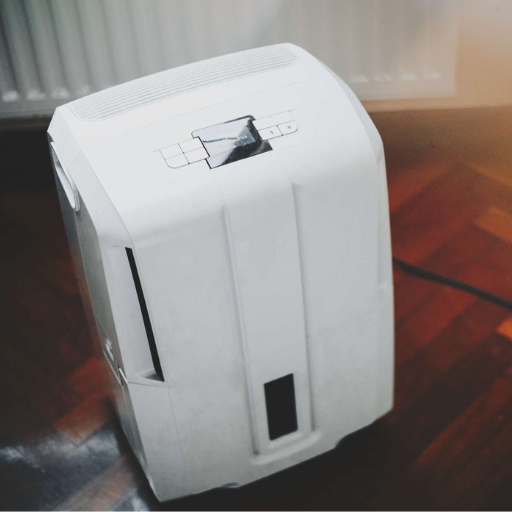
No, a dehumidifier cannot clean or purify the air. Its primary function is to reduce humidity levels by removing excess moisture. While this can help prevent mold growth and reduce allergens like dust mites that thrive in high humidity, a dehumidifier does not filter out airborne particles like dust, pet dander, or pollutants. For air purification, a dedicated air purifier with a high-quality filter, such as a HEPA filter, is required.
Does a Dehumidifier Reduce Airborne Allergens?
Although a dehumidifier does not remove airborne allergens, it does encourage an environment where those allergens do not thrive. Having high humidity levels, usually anything 50% and above, fosters the growth of mold and mildew that releases spores that function as allergens Dust mites, another form of allergen, also thrive in humid conditions. A dehumidifier can reduce indoor relative humidity to the optimal range of 30%-50% which can stifle the growth and spread of these allergens.
In one study, it was found that having low humidity levels on a consistent basis greatly reduced the population of dust mites and therefore decreased the number of allergens in the air. It is important to keep in mind, however, that a dehumidifier does not capture or filter particles from the airflow. While a dehumidifier works to stifle the conditions that allow allergens to thrive, pairing it with an air purifier that uses high-efficiency filters such as HEPA will tackle the allergen particles in the air directly. This method attacks both the humidity-related sources of allergens and the toxic particles suspended in the air, which greatly improves the air quality indoors.
How Does a Dehumidifier Affect Mold and Mildew?
A dehumidifier plays a significant role in controlling mold and mildew growth by reducing excess moisture in the air, which is a key factor in their development. Mold and mildew thrive in humid environments, typically when the relative humidity exceeds 60%. By maintaining indoor humidity levels between 30% and 50%, dehumidifiers help create conditions that are inhospitable to these fungi.
Studies have shown that mold spores can begin to germinate within 24 to 48 hours in moist conditions. Dehumidifiers act as a preventive measure by removing moisture before it can accumulate on surfaces, such as walls, ceilings, and fabrics, where mold may take hold. For instance, in a 100-square-foot space, a medium-capacity dehumidifier can extract up to 50 pints of water daily, depending on the initial humidity levels.
Furthermore, dehumidifiers indirectly enhance the performance of air purification systems by limiting the spread of airborne mold spores and mildew particles, which often cause respiratory issues or trigger allergies. By investing in a dehumidifier and regularly monitoring indoor humidity levels with a hygrometer, homeowners can effectively combat mold and mildew, safeguarding both their health and property.
Can a Dehumidifier Purify the Air as Effectively as an Air Purifier?
Although dehumidifiers contribute to maintaining a healthier indoor environment by controlling moisture levels, they are not designed to purify the air as effectively as dedicated air purifiers. A dehumidifier’s primary purpose is to reduce excess humidity, which helps prevent the proliferation of mold, mildew, and dust mites. However, most dehumidifiers lack the advanced filtration systems found in air purifiers, such as HEPA filters or activated carbon, which are capable of capturing particles as small as 0.3 microns, including pollen, pet dander, and certain airborne bacteria.
On the other hand, air purifiers excel at filtering fine particulate matter and volatile organic compounds (VOCs), directly improving air quality. According to studies, high-efficiency air purifiers can reduce airborne particle concentrations by up to 85% in a given space. While dehumidifiers indirectly improve air quality by mitigating conditions conducive to allergen growth, they cannot target and remove contaminants suspended in the air with the same efficiency as air purifiers.
For a comprehensive indoor air quality solution, combining both devices is often recommended. The dehumidifier can manage humidity levels, creating a less hospitable environment for allergens, while the air purifier works to eliminate active airborne pollutants. Together, they provide complementary functions to ensure cleaner, healthier indoor air.
How Does Humidity Affect Indoor Air Quality?
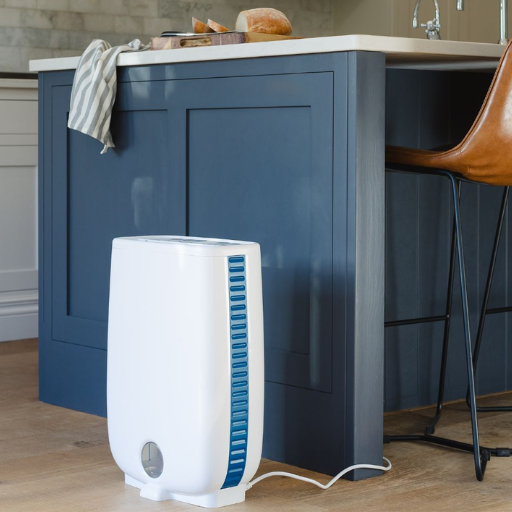
Humidity plays a significant role in indoor air quality because it impacts comfort and the presence of airborne contaminants. High humidity creates an ideal environment for mold, mildew, and dust mites, which can trigger allergies or respiratory issues. On the other hand, low humidity can lead to dry skin, irritated respiratory passages, and an increased spread of viruses. Maintaining balanced indoor humidity levels, typically between 30-50%, helps create a healthier and more comfortable environment for occupants.
What are the Effects of High Humidity on Indoor Environment?
High humidity can significantly impact indoor air quality, comfort, and structural integrity. When indoor humidity levels exceed 60%, the environment becomes conducive to the growth of mold and mildew. These fungi not only cause unpleasant odors and visible stains on walls and ceilings but can also lead to serious health issues, including respiratory problems and allergic reactions. Additionally, dust mites, another common allergen, thrive in damp conditions, further aggravating allergy symptoms for sensitive individuals.
Beyond health concerns, high humidity adversely affects building structures and materials. Excess moisture in the air can damage wood, causing it to warp, swell, or even rot over time. Paint and wallpaper may peel, and metal surfaces are more prone to rust. According to studies, prolonged exposure to high humidity can also reduce the lifespan of appliances, as internal components may corrode or fail due to moisture exposure.
From a comfort perspective, high humidity affects the body’s ability to regulate temperature. Excess moisture in the air inhibits sweat evaporation, making the environment feel hotter than it actually is. For instance, in environments with a temperature of 85°F and a relative humidity of 70%, the perceived temperature may feel closer to 95°F, increasing discomfort and heat-related stress. To counter this, using a dehumidifier or ensuring proper ventilation can help maintain optimal humidity levels indoors, contributing to a healthier and more comfortable living space.
How Can Reducing Humidity Lead to Cleaner Air?
Reducing indoor humidity plays a significant role in improving air quality by minimizing conditions that promote the growth of allergens and pollutants. High humidity levels provide an ideal environment for mold, mildew, and dust mites—common indoor air pollutants that can trigger allergies and respiratory issues. Studies suggest that maintaining indoor relative humidity between 30% and 50% not only helps prevent these allergens from thriving but also enhances overall air quality. Additionally, excessive moisture in the air can interact with volatile organic compounds (VOCs) emitted from household products, intensifying their presence in the indoor environment. Lowering humidity helps reduce this interaction, keeping the air cleaner and healthier.
Advanced dehumidifier technologies, often equipped with HEPA filters, further contribute to cleaner indoor air. These systems not only extract excess moisture but also capture fine particles, pollen, and even bacteria, ensuring a comprehensive approach to air improvement. According to environmental health guidelines, proper humidity control can improve air circulation and reduce irritants, ultimately creating a safer breathing space for occupants.
Is Breathing Clean Air Easier with Lower Humidity Levels?
Lower humidity levels can significantly contribute to creating a healthier indoor environment by reducing the growth of mold, mildew, and dust mites—all of which thrive in high-humidity conditions. According to studies, maintaining indoor humidity levels between 30% and 50% not only prevents these allergens but also minimizes the presence of airborne bacteria and viruses, which tend to thrive at higher humidity levels.
Additionally, reduced humidity helps improve the efficiency of air purifiers and HVAC systems. With less moisture in the air, these systems can filter out pollutants and particles more effectively, ensuring cleaner air circulation. Low humidity also decreases the risk of condensation on walls and other surfaces, which can prevent structural damage and the potential for harmful mold growth.
Data shows that keeping relative humidity within the recommended range can also alleviate respiratory issues like asthma and allergies. High levels of humidity can make the air feel stuffy, exacerbate breathing difficulties, and increase irritation for those with pre-existing conditions. Meanwhile, maintaining optimal humidity levels ensures a balance that promotes overall respiratory health while fostering a comfortable living environment.
While some dryness in the air can be beneficial for limiting harmful organisms, extremely low humidity—below 30%—can have adverse effects, such as skin dryness and irritation or the drying out of mucous membranes. This underscores the importance of striking the right balance for air quality improvement, ensuring that indoor spaces are neither too humid nor too dry.
What are the Health Benefits of Using a Dehumidifier?
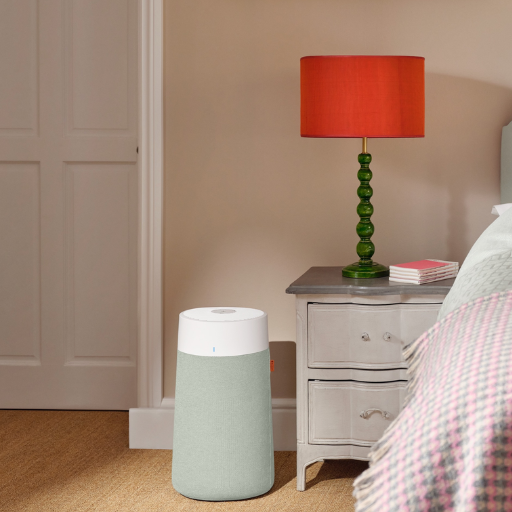
Using a dehumidifier offers several health benefits by maintaining optimal indoor humidity levels. It helps reduce the growth of allergens like mold, mildew, and dust mites, which thrive in high humidity and can trigger respiratory issues, allergies, or asthma. By lowering excess moisture in the air, a dehumidifier can alleviate symptoms such as coughing, sneezing, and irritated airways, promoting better breathing. Additionally, it can prevent the damp conditions that contribute to musty odors and potential bacterial growth, creating a cleaner and more comfortable living environment.
How Can a Dehumidifier Help Prevent Mold Spores and Dust Mites?
Mold spores and dust mites thrive in environments with relative humidity levels above 60%. Excess humidity encourages the growth of mold and provides the perfect conditions for dust mites to reproduce rapidly. By maintaining an optimal indoor humidity level between 30% and 50%, a dehumidifier can create a less hospitable environment for these allergens. Studies indicate that reducing humidity to below 50% decreases the presence of dust mites significantly, as they require high moisture levels to survive. Similarly, keeping humidity under control can inhibit mold growth, as the spores need moisture to develop further and spread.
Modern dehumidifiers are also equipped with advanced sensors to measure and regulate humidity in real-time, ensuring that your indoor atmosphere remains consistently dry and healthy. Additionally, these devices can work alongside air purifiers to enhance overall air quality by reducing allergens, odors, and airborne microbes. Whether you’re concerned about allergies, asthma, or maintaining a cleaner home environment, integrating a dehumidifier into your space is an effective and dynamic solution backed by scientific insights.
Can Dehumidifiers Help with Asthma and Allergy Symptoms?
Dehumidifiers can play a significant role in managing asthma and allergy symptoms by creating an indoor environment less conducive to allergens such as mold, mildew, and dust mites. These allergens thrive in high-humidity conditions, typically when relative humidity levels exceed 50%. By reducing humidity to a comfortable range of 30-50%, dehumidifiers mitigate the factors that commonly trigger respiratory issues.
Studies have shown that dust mites, a major allergen for many individuals, thrive in humid environments. Lowering indoor humidity levels below 50% can drastically reduce dust mite populations, thereby alleviating symptoms like sneezing, coughing, and wheezing in sensitive individuals. Similarly, mold and mildew growth, which can exacerbate asthma symptoms, is significantly curbed in drier conditions. For those with severe allergies or asthma, maintaining optimal humidity can be essential for improving air quality and reducing the risk of flare-ups.
Additionally, modern dehumidifiers often come equipped with HEPA filtration systems or advanced air-purifying features, offering a dual benefit of reducing airborne particulates like pollen and pet dander while simultaneously managing humidity. Combined with regular cleaning practices, such technology can provide a comprehensive approach to allergy and asthma management. Maintaining a comfortable and safe indoor environment is crucial for long-term health and well-being, particularly for those vulnerable to respiratory irritations.
Does Using a Dehumidifier Lead to Good Air Quality?
Dehumidifiers play a significant role in maintaining good air quality by regulating indoor humidity levels, which in turn minimizes the growth of mold, mildew, and dust mites—common triggers for respiratory issues and allergens. An ideal indoor relative humidity level falls between 30% and 50%, as excessive humidity can create an environment conducive to biological pollutants. Studies have shown that maintaining this range not only reduces mold spores in the air but also improves overall comfort, particularly in regions with high moisture levels.
Modern dehumidifiers often go beyond simple moisture control, incorporating advanced features such as HEPA filters, which help capture airborne pollutants like dust, pollen, and pet dander. For example, data from indoor air quality experts reveals that HEPA-equipped dehumidifiers can remove up to 99.97% of particles as small as 0.3 microns, significantly improving air purity. Additionally, by decreasing dampness in the air, dehumidifiers prevent odors caused by mold and mildew, fostering a fresher living environment.
However, it is important to balance usage correctly, as overly dry air—below 30% humidity—can lead to other issues like dry skin, irritated respiratory passages, and increased susceptibility to colds. Thus, the key to supporting good air quality with a dehumidifier lies in consistent monitoring and maintaining the optimal humidity range tailored to individual needs and home environments.
Reference Sources
-
Energy Saving and Environmental Protection in Grain Drying Systems1:
- Key Findings: This study focused on a grain drying system that uses dehumidification and condensation to recycle exhaust gas. While it highlights the environmental benefits of dehumidification, it does not directly address air cleaning but emphasizes energy efficiency and pollutant reduction.
- Methodology: The system was tested for energy consumption and drying performance, analyzing the effects of condensation intensity on efficiency.
-
Solar Desalination Methods for Remote Areas2:
- Key Findings: This research explored solar desalination techniques, including humidification-dehumidification systems. It mentioned dehumidifiers in the context of water vapor condensation but did not focus on air cleaning capabilities.
- Methodology: The study reviewed various desalination methods, emphasizing the role of renewable energy in improving efficiency and sustainability.
-
Pollutant Sources of PM2.5 and PM10 in East Java3:
- Key Findings: This study investigated air pollution sources and used a clean room with a dehumidifier to control humidity during air quality measurements. It highlighted the role of dehumidifiers in maintaining controlled environments but did not explore their air cleaning properties.
- Methodology: Air particulate concentrations were analyzed using gravimetric methods, with meteorological data aiding in source identification.
Frequently Asked Questions (FAQs)
Q: How does a dehumidifier improve indoor air quality?
A: A dehumidifier improves indoor air quality by removing excess moisture from the air, which helps to prevent mold growth, reduce dust mites, and eliminate musty odors. This creates a healthier environment and can help individuals with allergies or asthma.
Q: Can a dehumidifier remove allergens from the air?
A: While a dehumidifier removes moisture from the air, it does not directly remove allergens. However, by reducing humidity, it can limit the growth of mold and dust mites, which are common allergens. For direct removal of particles from the air, an air purifier would be more effective.
Q: What is the difference between an air purifier and a dehumidifier?
A: An air purifier removes contaminants from the air, such as dust, pollen, and smoke, using filters. A dehumidifier reduces moisture in the air, preventing mold and mildew growth. Both devices contribute to better indoor air quality but address different aspects of air purification.
Q: Is it better to use a whole-house dehumidifier rather than a portable one?
A: A whole-house dehumidifier is integrated into your home’s HVAC system and can manage humidity levels throughout the entire house, making it ideal for larger spaces. Portable dehumidifiers are suitable for individual rooms and offer flexibility for targeting specific damp areas.
Q: Do air purifiers and dehumidifiers work together to improve indoor air quality?
A: Yes, using both an air purifier and a dehumidifier can significantly improve your indoor air quality. The dehumidifier reduces moisture, preventing mold and dust mites, while the air purifier removes particles and contaminants from the air.
Q: Can a dehumidifier create dry air?
A: While a dehumidifier removes excess moisture from the air, it is unlikely to create overly dry air unless used excessively in already dry environments. Monitoring humidity levels can prevent this issue and maintain good indoor air quality.
Q: How do dehumidifiers help with air circulation?
A: Dehumidifiers can help improve air circulation by reducing humidity, which can make the air feel fresher and more comfortable. This can enhance the efficiency of air conditioners and ventilations systems, contributing to good air circulation in your home.
Q: Are there specific types of dehumidifiers that are more effective for allergy sufferers?
A: For allergy sufferers, choosing a dehumidifier with a built-in air filter can be beneficial, as it can help remove additional particles from the air while reducing humidity. Whole-house dehumidifiers are also effective for maintaining consistent humidity levels throughout a home.
Q: Can using a dehumidifier help alleviate symptoms of allergies or asthma?
A: Yes, using a dehumidifier can help alleviate symptoms of allergies or asthma by reducing moisture levels that encourage mold and dust mite growth. This creates a less hospitable environment for these allergens, potentially reducing symptoms.



